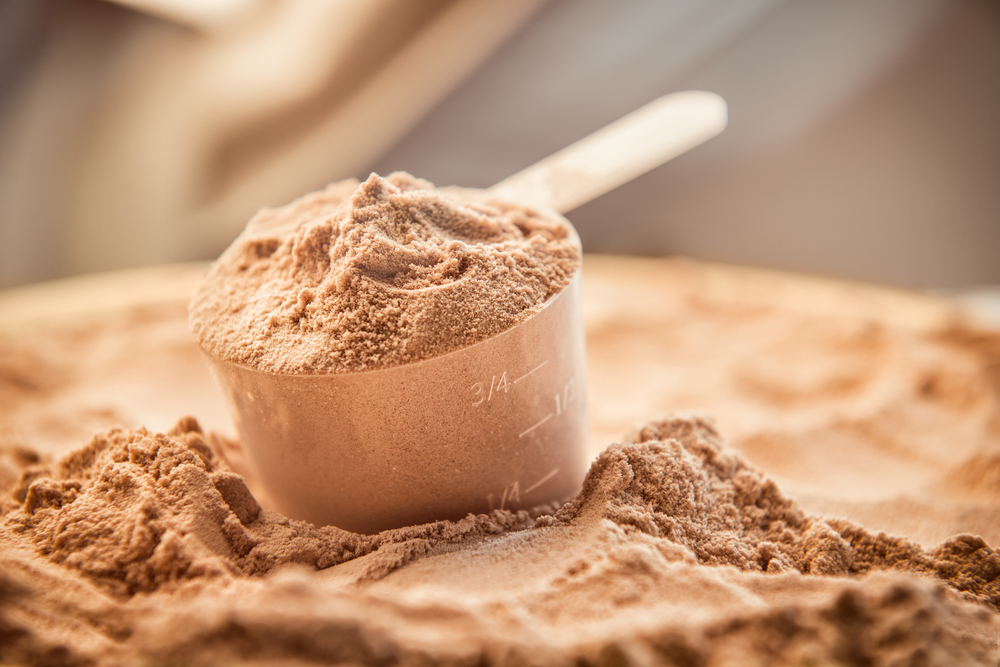Because of these benefits, Whey protein is very popular and used in sports, especially in bodybuilding. It is superior to other types of protein in all aspects, but in addition it provides the body with useful amino acids for muscle building. Because of its immediate protein content, it is used before training to increase strength and performance, and also after training to accelerate muscle recovery.
Regular protein consumption also allows the body to strengthen its defences. Indeed, its role as an antioxidant inhibits cell ageing and allows the body to protect itself against certain diseases.
The different Whey proteins
Depending on the method of extraction and the concentration of whey proteins, there are 3 categories of Whey proteins:
- WPC (Whey Protein Concentrate) has a protein content of between 55 and 89%, but with a higher fat and lactose content. It can be ingested before or after the workout or between meals as a nutritional tool for those suffering from deficiency. However, due to its composition, it may trigger allergic reactions in lactose intolerant individuals.
- WPI (Whey Protein Isolate) contains between 90 and 95% protein and traces of fat and lactose. Its amino acid profile is unrivalled as it contains all eight essential amino acids including BCAAs as well as histidine. With an almost negligible percentage of carbohydrates, WPI is an ideal supplement for those with lactose intolerance.
- WPH (Whey Protein Hydrolyzed) is a special form of Whey Protein as its proteins are molecularly segmented to be pre-digested. It also has a high concentration of peptides. This type of Whey Protein is therefore the easiest to digest and the fastest to be assimilated by the body. This rapid absorption allows the stimulation of protein synthesis in record time.
How and when to take Whey protein?
Whey proteins are regularly used by bodybuilders and sportsmen who want to promote muscle growth. But new studies* have shown that it can help with weight loss, treat cancer and common ailments in older people, or be used as a dietary supplement for people with protein deficiencies, especially vegetarians. The supplementation will therefore be taken according to the objective to be achieved.
For non-athletes, a dose of 0. 83 grams per kilo of body weight is more than enough for one day, which is the dose recommended by the French National Food Safety Agency** . On the other hand, regular sportsmen and women need between 1. 2 and 2 grams of protein per kilo of body weight. An athlete will need 2 to 2. 5 grams of protein per kilo of body weight depending on the nature of his sport (explosive or endurance sport).
It is recommended that you take it when you get out of bed or just after a training session, as the body is more receptive to the assimilation of protein powders during these periods. Note that in case of overdose, the excess will just be lost, as it will not be assimilated or used.
Side effects of protein powder
With legally sold dietary supplements, there is little risk of side effects, however some people may experience digestive discomfort, especially after consuming whey protein. As whey is derived from cow's milk or the leftovers from the cheese industry, it can be poorly digested by people with lactose intolerance.
This lactose intolerance can lead to digestive pain, gas and even
vomiting, depending on the individual.
But don't worry, alternatives
exist. Whey isolate, which generally contains only 0. 1% lactose, is an
interesting solution. Otherwise, other sources of protein exist such as
pea, hemp or beef protein which have an equivalent protein content. The
positive effects are exactly the same, from building to muscle recovery.
Please note: There are many rumours that protein powders cause kidney problems, but no scientific study has been able to prove that additional protein intake can cause kidney damage in people who do not have initial kidney problems.
Bibliographie
*Int J Cancer. 2014 Oct 15;135(8):1940-8. Keum N / Amy J. Hector
International Journal of Sports Nutrition and Exercise Metabolism 2018
**Collective
expertise report ANSES, 2007




